
Wetenschap
Draagt lichaamsbeweging ontwikkeling aan? Bij de zeeanemoon is de manier waarop je beweegt van belang

Zeeanemonen blijken ook baat te hebben bij het handhaven van een actieve levensstijl, vooral omdat ze uitgroeien van eivormige zwemmende larven tot sedentaire, buisvormige poliepen. Het weefsel wordt gevisualiseerd met behulp van actine-kleuring. Krediet:Ikmi group/EMBL en ALMF/EMBL
Als mensen weten we dat een actieve levensstijl ons enige controle geeft over onze vorm. Wanneer we de stoep opgaan, onze stappen volgen en naar de sportschool gaan, kunnen we de spierontwikkeling behouden en lichaamsvet verminderen. Onze fysieke activiteit helpt ons fysieke figuur vorm te geven. Maar wat als we soortgelijke aerobics zouden volhouden in onze eerdere vormen? Is het mogelijk dat onze embryo's ook geoefend hebben?
Onderzoekers van de Ikmi-groep van EMBL richtten deze vragen op de zeeanemoon om te begrijpen hoe gedrag de lichaamsvorm tijdens de vroege ontwikkeling beïnvloedt. Zeeanemonen blijken ook baat te hebben bij het handhaven van een actieve levensstijl, vooral omdat ze uitgroeien van eivormige zwemmende larven tot sedentaire, buisvormige poliepen. Deze morfologische transformatie is een fundamentele overgang in de levensgeschiedenis van veel soorten neteldieren, waaronder de onsterfelijke kwallen en de bouwers van het rijkste en meest complexe ecosysteem van onze planeet, koraalriffen.
Tijdens de ontwikkeling voeren de larven van de zeeanemoon (Nematostella) een specifiek patroon van gymnastische bewegingen uit. Te veel of te weinig spieractiviteit of een drastische verandering in de organisatie van hun spieren kan de zeeanemoon van zijn normale vorm doen afwijken.
In een nieuw artikel gepubliceerd in Current Biology , onderzoekt de Ikmi-groep hoe dit soort gedrag de ontwikkeling van dieren beïnvloedt. Met expertise in live-beeldvorming, computationele methodologie, biofysica en genetica, heeft het multidisciplinaire team van wetenschappers 2D- en 3D-livebeeldvorming omgezet in kwantitatieve functies om veranderingen in het lichaam te volgen. Ze ontdekten dat zich ontwikkelende zeeanemonen zich gedragen als hydraulische pompen, de lichaamsdruk reguleren door spieractiviteit en hydraulica gebruiken om het larvale weefsel te vormen.
"Mensen gebruiken een skelet gemaakt van spieren en botten om te oefenen. Zeeanemonen daarentegen gebruiken een hydroskelet gemaakt van spieren en een holte gevuld met water", zegt Aissam Ikmi, EMBL-groepsleider. Dezelfde hydraulische spieren die de zich ontwikkelende zeeanemonen helpen bewegen, lijken ook invloed te hebben op hoe ze zich ontwikkelen. Met behulp van een beeldanalysepijplijn om de lengte, diameter, geschat volume en beweeglijkheid van de lichaamskolom in grote datasets te meten, ontdekten wetenschappers dat Nematostella-larven zich van nature in twee groepen verdelen:langzaam en snel ontwikkelende larven. Tot verbazing van het team, hoe actiever de larven, hoe langer ze nodig hebben om zich te ontwikkelen. "Ons werk laat zien hoe zich ontwikkelende zeeanemonen in wezen 'oefenen' om hun morfologie op te bouwen, maar het lijkt erop dat ze hun hydroskelet niet kunnen gebruiken om tegelijkertijd te bewegen en zich te ontwikkelen," zei Ikmi.
Making microscopes and building balloons
"There were many challenges to doing this research," explains first author and former EMBL predoc Anniek Stokkermans, now a postdoc at the Hubrecht Institute in the Netherlands. "This animal is very active. Most microscopes cannot record fast enough to keep up with the animal's movements, resulting in blurry images, especially when you want to look at it in 3D. Additionally, the animal is quite dense, so most microscopes cannot even see halfway through the animal."
To look both deeper and faster, Ling Wang, an application engineer in the Prevedel group at EMBL, built a microscope to capture living, developing sea anemone larvae in 3D during its natural behavior.
"For this project, Ling has specifically adapted one of our core technologies, Optical Coherence Microscopy or OCM. The key advantage of OCM is that it allows the animals to move freely under the microscope while still providing a clear, detailed look inside, and in 3D," said Robert Prevedel, EMBL group leader. "It has been an exciting project that shows the many different interfaces between EMBL groups and disciplines."
With this specialized tool, the researchers were able to quantify volumetric changes in tissue and body cavity. "To increase their size, sea anemones inflate like a balloon by taking up water from the environment," Stokkermans explained. "Then, by contracting different types of muscles, they can regulate their short-term shape, much like squeezing an inflated balloon on one side, and watching it expand on the other side. We think this pressure-driven local expansion helps stretch tissue, so the animal slowly becomes more elongated. In this way, contractions can have both short-term and a long-term effects."
Balloons and sea anemones
To better understand the hydraulics and their function, researchers collaborated with experts across disciplines. Prachiti Moghe, an EMBL predoc in the Hiiragi group, measured pressure changes driving body deformations. Additionally, mathematician L. Mahadevan and engineer Aditi Chakrabarti from Harvard University introduced a mathematical model to quantify the role of hydraulic pressures in driving system-level changes in shape. They also engineered reinforced balloons with bands and tapes that mimic the range of shapes and sizes seen in both normal and muscle-defective animals.
"Given the ubiquity of hydrostatic skeletons in the animal kingdom, especially in marine invertebrates, our study suggests that active muscular hydraulics play a broad role in the design principle of soft-bodied animals," Ikmi said. "In many engineered systems, hydraulics is defined by the ability to harness pressure and flow into mechanical work, with long-range effects in space-time. As animal multicellularity evolved in an aquatic environment, we propose that early animals likely exploited the same physics, with hydraulics driving both developmental and behavioral decisions."
As the Ikmi group previously studied the connections between diet and tentacle development, this research adds a new layer to understanding how body forms develop.
"We still have many questions from these new findings. Why are there different activity levels? How do cells exactly sense and translate pressure into a developmental outcome?" Stokkermans asked as she considers where this research leads. "Furthermore, since tube-like structures form the basis of many of our organs, studying the mechanisms that apply to Nematostella will also help gain further understanding in how hydraulics play a role in organ development and function." + Verder verkennen
Eat more to grow more arms… if you're a sea anemone
 Nieuwe legering kan het gewicht van warmteafvoersystemen direct met een derde verminderen
Nieuwe legering kan het gewicht van warmteafvoersystemen direct met een derde verminderen Welke intermoleculaire krachten kunnen een neonatoom hebben?
Welke intermoleculaire krachten kunnen een neonatoom hebben?  Nieuw proces versnelt medicamenteuze behandelingen voor virale infecties en kanker
Nieuw proces versnelt medicamenteuze behandelingen voor virale infecties en kanker Wat zijn de eigenschappen van vloeibaar?
Wat zijn de eigenschappen van vloeibaar?  Hechtgedrag van zelfconstructieve materialen voor het eerst gemeten
Hechtgedrag van zelfconstructieve materialen voor het eerst gemeten
 Aardverschuivingsmodellering na Kaikoura Quake levert gegevens aan eerstehulpverleners
Aardverschuivingsmodellering na Kaikoura Quake levert gegevens aan eerstehulpverleners NASA volgt tropische storm Talim in Filippijnse Zee
NASA volgt tropische storm Talim in Filippijnse Zee Recordzonneschijn tijdens eerste COVID-19-lockdown grotendeels veroorzaakt door ongewoon weer
Recordzonneschijn tijdens eerste COVID-19-lockdown grotendeels veroorzaakt door ongewoon weer Wat er te weten valt over de watervoerende lagen in Zuid-Afrika
Wat er te weten valt over de watervoerende lagen in Zuid-Afrika Lee herboren als een kleine zombie-orkaan in de centrale Atlantische Oceaan
Lee herboren als een kleine zombie-orkaan in de centrale Atlantische Oceaan
Hoofdlijnen
- De hectische 24-uurs inspanning om een bedreigde, verweesde vleermuis
- De genetica van schijfziekte bij honden ontrafelen
- Verspilde vogelveren veranderd in voedsel
- Iteratieve evolutie:is de Aldabra-rail twee keer geëvolueerd?
- Nieuwe methode voor het planten van citrusvruchten stopt insecten, levert extra voordelen op
- Woestijn in Zuid-Californië overspoeld met de beste superbloei in 20 jaar
- Wat is de Western Blot-test?
- Hoe verlaat mRNA de kern?
- De virale parasieten van gigantische virussen in de loop van de tijd volgen
- Hondenurine om bedreigde bonte plevieren te redden
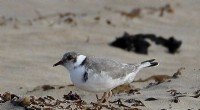
- Onze darmmicroben hebben circadiane ritmes,
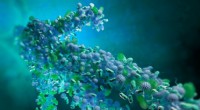
- Een nieuwe regulator van de handel in blaasjes in planten
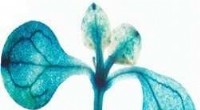
- Als het gaat om de strijd tegen klimaatverandering, zegt Californië dat de bever eens moet worden overwogen
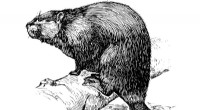
- Aanpassen aan fluctuerende temperaturen
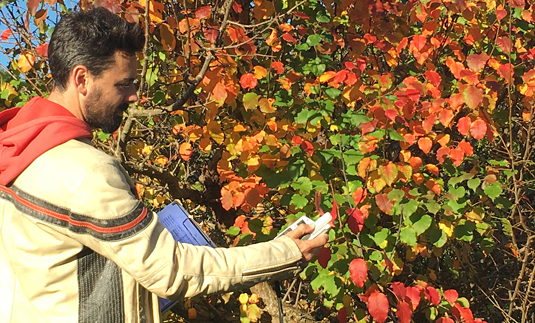
 Waren er enige waarschuwingsborden vóór de uitbarsting van Mount Saint Helens in 1980?
Waren er enige waarschuwingsborden vóór de uitbarsting van Mount Saint Helens in 1980?  VS onderzoeken dodelijke Hyundai, Kia airbagstoringen
VS onderzoeken dodelijke Hyundai, Kia airbagstoringen Zonintensiteit versus hoek
Zonintensiteit versus hoek Onderzoekers ontwikkelen uniek proces voor het produceren van een mengsel van licht en materie
Onderzoekers ontwikkelen uniek proces voor het produceren van een mengsel van licht en materie Niet voor altijd:grootste roze diamantmijn ter wereld gaat dicht
Niet voor altijd:grootste roze diamantmijn ter wereld gaat dicht Techniek maakt handig, nauwkeurige optische beeldvorming van individuele eiwitten
Techniek maakt handig, nauwkeurige optische beeldvorming van individuele eiwitten Hoe bevestigingsmiddel Pullout
Hoe bevestigingsmiddel Pullout Decimale inch converteren naar Mm
Decimale inch converteren naar Mm
- Elektronica
- Biologie
- Zonsverduistering
- Wiskunde
- French | Italian | Spanish | Portuguese | Swedish | German | Dutch | Danish | Norway |

-
Wetenschap © https://nl.scienceaq.com

